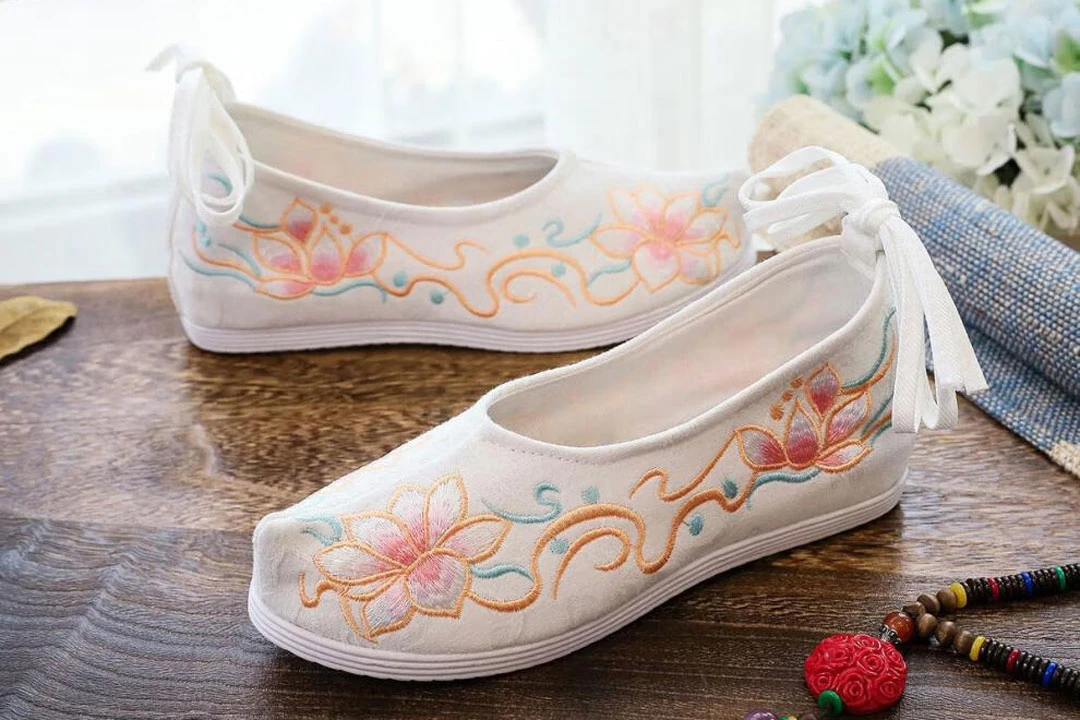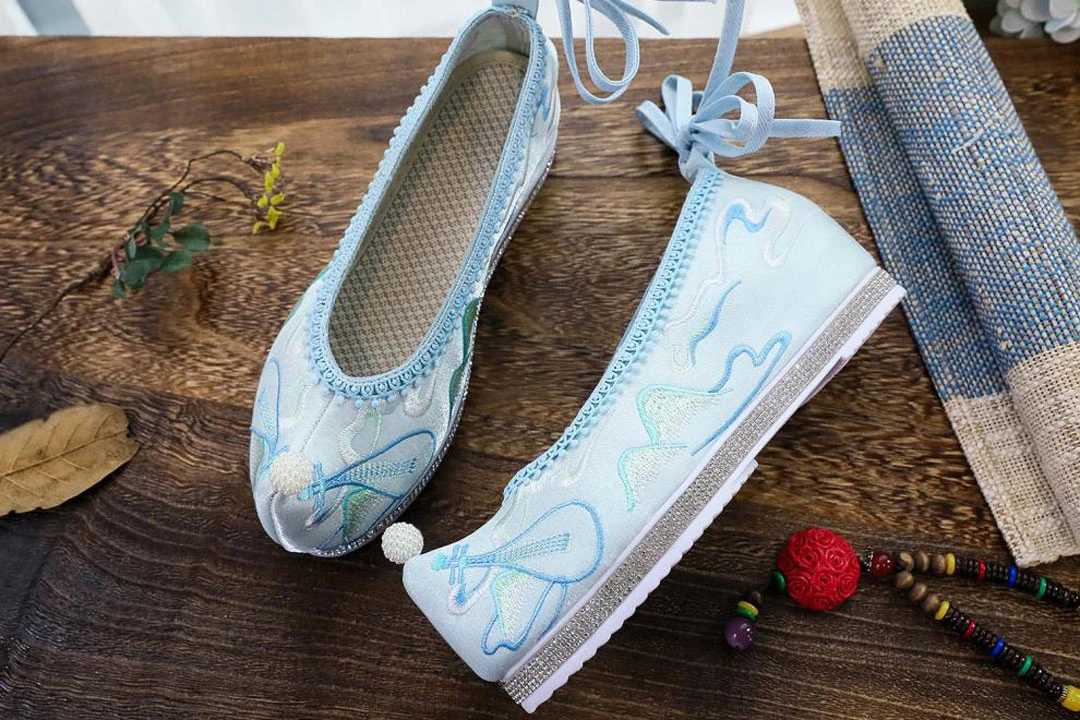In the resplendent world of Hanfu, where every garment is a poetic expression of Chinese tradition, the significance of footwear often takes center stage. Hanfu shoes and boots, crafted with precision and steeped in cultural symbolism, play an integral role in completing the ensemble. From the elegant simplicity of traditional slippers to the sturdiness of embroidered boots, these footwear choices add layers of meaning to the wearer’s attire.
Traditional Hanfu Footwear
Slippers
Slippers are the quintessential footwear choice for Hanfu enthusiasts, offering a blend of comfort and simplicity. Made from traditional fabrics such as silk or cotton, these soft-soled shoes are often adorned with subtle embroidery or decorative motifs. Slippers are popular for everyday wear, showcasing a balance between practicality and elegance.
Hanfu Boots
For special occasions or colder weather, Hanfu boots take center stage. These sturdy and often high-cuffed boots are crafted from durable materials such as leather or silk brocade. What sets Hanfu boots apart is the intricate embroidery that adorns the shaft and vamp, depicting traditional Chinese motifs, mythological creatures, or auspicious symbols.
Symbolism Woven in Threads and Leather
Patterns
Hanfu shoes, particularly boots, are often adorned with embossed patterns, adding an extra layer of artistry to the footwear. These patterns can range from simple floral designs to intricate depictions of traditional stories. The embossing not only adds to the visual appeal but also showcases the craftsmanship of the shoemaker.
Colors
Colors play a significant role in Chinese culture, with each hue carrying specific meanings. Hanfu shoes often reflect this color symbolism. Red, for example, symbolizes good luck and happiness, making it a popular choice for festive occasions. Black, on the other hand, conveys dignity and solemnity, often chosen for more formal events.
Styles Across Dynasties
In the Han Dynasty, simple cloth shoes were the norm. Made from woven fabrics, these shoes were practical for the agricultural lifestyle of the time. While lacking the intricate embellishments of later periods, Han Dynasty footwear set the foundation for the elegance that would characterize Hanfu shoes in the centuries to come.
The Tang Dynasty witnessed a flourishing of arts and culture, and Hanfu shoes evolved to reflect this vibrancy. Embroidered silk boots with upturned toes became fashionable, and intricate patterns were woven into the fabric, showcasing the opulence of the era.
The Song Dynasty favored delicate elegance, and this was mirrored in the footwear of the time. Slippers with subtle embroidery and soft, comfortable soles became popular. These shoes were designed to complement the refined aesthetics of Song-era Hanfu.
The Ming Dynasty marked an era of extravagance, and Hanfu shoes followed suit. Boots with elaborate embroidery, depicting scenes from classical literature or nature, were highly sought after. Ming-era footwear embraced a fusion of practicality and ornate detailing.
The Artistry of Hanfu Shoemaking
Hanfu shoes, especially those with intricate embroidery or embossing, are often crafted using traditional techniques passed down through generations. Hand-stitching, embroidery, and the use of specialized tools are integral to the shoemaking process, preserving the authenticity and artistry of each pair.
The choice of materials is crucial in defining the style and purpose of Hanfu shoes. Silk is commonly used for slippers, providing a comfortable and lightweight option for everyday wear. Leather, on the other hand, is favored for boots, offering durability and sturdiness. Silk brocade is often used for decorative elements, adding a touch of luxury to the footwear.
Modern Hanfu shoes often blend traditional aesthetics with modern design principles to cater to the comfort and preferences of contemporary wearers. Innovations in materials, such as the use of breathable fabrics and comfortable insoles, ensure that traditional footwear is adapted for today’s lifestyle.
Conclusion
Stepping into tradition with Hanfu shoes is not just a matter of covering one’s feet; it is a journey into the rich tapestry of Chinese cultural heritage. From the simplicity of slippers to the intricate embroidery of boots, each pair tells a story of historical evolution, cultural symbolism, and masterful craftsmanship. As contemporary designers breathe new life into these traditional footwear styles, the allure of Hanfu shoes continues to captivate wearers around the world. With each step, a wearer not only embraces the elegance of Hanfu but also walks in the footsteps of a cultural legacy that spans centuries.


